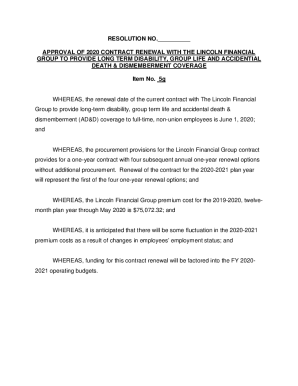Effective Use Of Proxy Statements (Form DEF 14A) For Informed Decision Making

Table of Contents
Proxy statements (Form DEF 14A) are formal documents that publicly traded companies are required to file with the Securities and Exchange Commission (SEC) before shareholder meetings. These documents outline matters up for shareholder vote, providing crucial insights into the company's governance, financial health, and future plans. SEC regulations mandate the disclosure of this information, ensuring transparency and enabling investors to make informed choices. This article aims to guide you on effectively using proxy statements to identify potential risks and opportunities, ultimately leading to better investment decisions.
Understanding the Structure and Key Components of a Proxy Statement (Form DEF 14A)
Navigating a proxy statement can seem daunting, but understanding its key components simplifies the process. Let's break down the essential sections:
Decoding the Executive Summary: A High-Level Overview
The executive summary offers a concise overview of the key proposals and matters to be voted on at the upcoming shareholder meeting. This is your starting point.
-
Key information typically included:
- Proposed mergers and acquisitions
- Director elections and nominations
- Executive compensation proposals (including say-on-pay votes)
- Shareholder proposals
- Amendments to the company's bylaws
-
Example: A typical executive summary might briefly describe a proposed merger, highlighting the strategic rationale and anticipated benefits for shareholders, along with a summary of executive compensation packages for the upcoming year.
Analyzing the Corporate Governance Section: Identifying Potential Red Flags and Strengths
The corporate governance section provides critical insights into the company's leadership and oversight. Careful analysis can uncover potential red flags or highlight areas of strength.
-
Key areas to scrutinize:
- Board composition: Consider the diversity, independence, and experience of board members.
- Audit committee independence: Assess the independence and expertise of the audit committee in overseeing financial reporting.
- Risk management: Evaluate the company's approach to identifying and managing risks.
-
Tips for evaluating board independence: Look for directors without significant ties to management, and examine the audit committee's charter for details on its oversight responsibilities.
Executive Compensation Scrutiny: Understanding Executive Pay and its Relation to Company Performance
Executive compensation is a critical aspect of corporate governance and often a focus of shareholder activism. Analyzing this section allows you to assess alignment between executive pay and company performance.
-
Elements to analyze:
- Base salary
- Bonuses
- Stock options and other equity-based compensation
- Perks and benefits
-
Important Considerations: Compare executive compensation to industry benchmarks and examine the correlation between executive pay and company performance. Pay close attention to say-on-pay votes, where shareholders have a voice in executive compensation decisions. Keywords: Executive compensation, say-on-pay, shareholder voting.
Utilizing Proxy Statements for Identifying Investment Opportunities and Risks
Proxy statements offer invaluable insights that can inform your investment strategy, helping you identify both opportunities and potential risks.
Mergers and Acquisitions Analysis: Evaluating the Rationale and Potential Impact on Shareholder Value
Proposed mergers and acquisitions are often detailed in proxy statements. Careful analysis is crucial to determine whether the deal enhances shareholder value.
-
Questions to ask:
- What is the strategic rationale for the merger or acquisition?
- Is the valuation fair?
- What are the potential synergies and cost savings?
- What are the potential risks and challenges?
-
Due diligence is paramount: Thoroughly assess the financial implications and potential integration challenges. Keywords: M&A, shareholder value, synergy, due diligence.
Shareholder Proposals: Understanding the Issues Raised and Their Potential Implications
Shareholder proposals often address important corporate governance and social issues. Analyzing these proposals can reveal insights into shareholder concerns and company strategy.
-
Types of shareholder proposals and their impact:
- Environmental, Social, and Governance (ESG) issues (e.g., climate change, diversity, human rights)
- Executive compensation
- Political contributions
-
These proposals can influence a company's long-term strategy and reputation. Keywords: Shareholder activism, ESG investing, corporate social responsibility.
Identifying Potential Conflicts of Interest: Recognizing Red Flags and Assessing Their Impact
Proxy statements can reveal potential conflicts of interest that may negatively affect shareholder value.
-
Examples of conflicts of interest:
- Related-party transactions
- Excessive executive compensation not tied to performance
- Lack of transparency in decision-making processes
-
Scrutinize these situations carefully. Keywords: Conflict of interest, corporate governance, transparency.
Effective Strategies for Accessing and Analyzing Proxy Statements
Accessing and analyzing proxy statements effectively requires a systematic approach.
Locating Proxy Statements: Where to Find Them Online
Proxy statements are readily available online through various sources:
-
The SEC's EDGAR database: This is the primary source for SEC filings.
-
Company investor relations websites: Most publicly traded companies post their proxy statements on their investor relations pages.
-
Step-by-step instructions: Search the EDGAR database using the company's CIK number or company name. Navigate to the company's investor relations website and look for the "SEC Filings" or "Investor Information" section. Keywords: EDGAR, SEC filings, company website.
Utilizing Proxy Statement Analysis Tools: Streamlining the Process
Several software solutions and resources can assist in analyzing proxy statements:
-
Proxy advisory firms: These firms provide in-depth analysis of proxy statements and voting recommendations.
-
Investment research tools: Some platforms offer tools to streamline the analysis of financial data within proxy statements.
-
Advantages of using tools: These tools can significantly speed up the analysis process and provide valuable insights. Keywords: Proxy voting, proxy advisory firms, investment research tools.
Interpreting Financial Data within Proxy Statements: Connecting the Dots
Proxy statements often contain financial data that can inform your investment decisions.
-
Key financial metrics to interpret:
- Revenue
- Profit margins
- Debt levels
- Cash flow
-
Understanding these metrics can help you assess the company's financial health and future prospects. Keywords: Financial statements, financial ratios, fundamental analysis.
Making Informed Decisions with Proxy Statements (Form DEF 14A)
In conclusion, actively engaging with proxy statements (Form DEF 14A) is crucial for making informed investment decisions. By understanding the structure, key components, and potential insights within these documents, you can identify both investment opportunities and potential risks. Mastering the art of proxy statement analysis empowers you to take control of your investments and become a more informed investor. Take the next step – explore the SEC's EDGAR database today and start utilizing proxy statements to enhance your investment strategies. Become a more informed investor!

Featured Posts
-
 Is Severance Season 3 Confirmed Analyzing The Chances Of Renewal
May 17, 2025
Is Severance Season 3 Confirmed Analyzing The Chances Of Renewal
May 17, 2025 -
 Secret Service Investigation Cocaine Found At White House Case Closed
May 17, 2025
Secret Service Investigation Cocaine Found At White House Case Closed
May 17, 2025 -
 Fortnites Latest Shop Update What Went Wrong
May 17, 2025
Fortnites Latest Shop Update What Went Wrong
May 17, 2025 -
 Effective Use Of Proxy Statements Form Def 14 A For Informed Decision Making
May 17, 2025
Effective Use Of Proxy Statements Form Def 14 A For Informed Decision Making
May 17, 2025 -
 37 Point Loss Prompts Thibodeau To Demand More From New York Knicks
May 17, 2025
37 Point Loss Prompts Thibodeau To Demand More From New York Knicks
May 17, 2025
Latest Posts
-
 The Trump Family Grows Tiffany Trumps Son Alexander And The Family Lineage
May 17, 2025
The Trump Family Grows Tiffany Trumps Son Alexander And The Family Lineage
May 17, 2025 -
 Upad U Teslin Showroom U Berlinu Prosvjednici I Poruka O Planetarnoj Prijetnji
May 17, 2025
Upad U Teslin Showroom U Berlinu Prosvjednici I Poruka O Planetarnoj Prijetnji
May 17, 2025 -
 Alexander Boulos Arrives Exploring The Expanding Trump Family Tree
May 17, 2025
Alexander Boulos Arrives Exploring The Expanding Trump Family Tree
May 17, 2025 -
 The Night Trump Was Humiliated Lawrence O Donnells Unforgettable Broadcast
May 17, 2025
The Night Trump Was Humiliated Lawrence O Donnells Unforgettable Broadcast
May 17, 2025 -
 Melania Trumps Current Role And Public Appearances
May 17, 2025
Melania Trumps Current Role And Public Appearances
May 17, 2025
